Chevrolet has come a long way – actually 67 years – since Zora Arkus-Duntov built the first mid/rear-engine Corvette. That was in 1953 when #856 EX-54’s stock Six was removed and the body and chassis modified to accommodate a prototype Cadet II engine and transaxle. Unfortunately that car is long gone, but the Matunes showcase the modern Corvette transformation from front to mid-engine, culminating with the incredible C8.
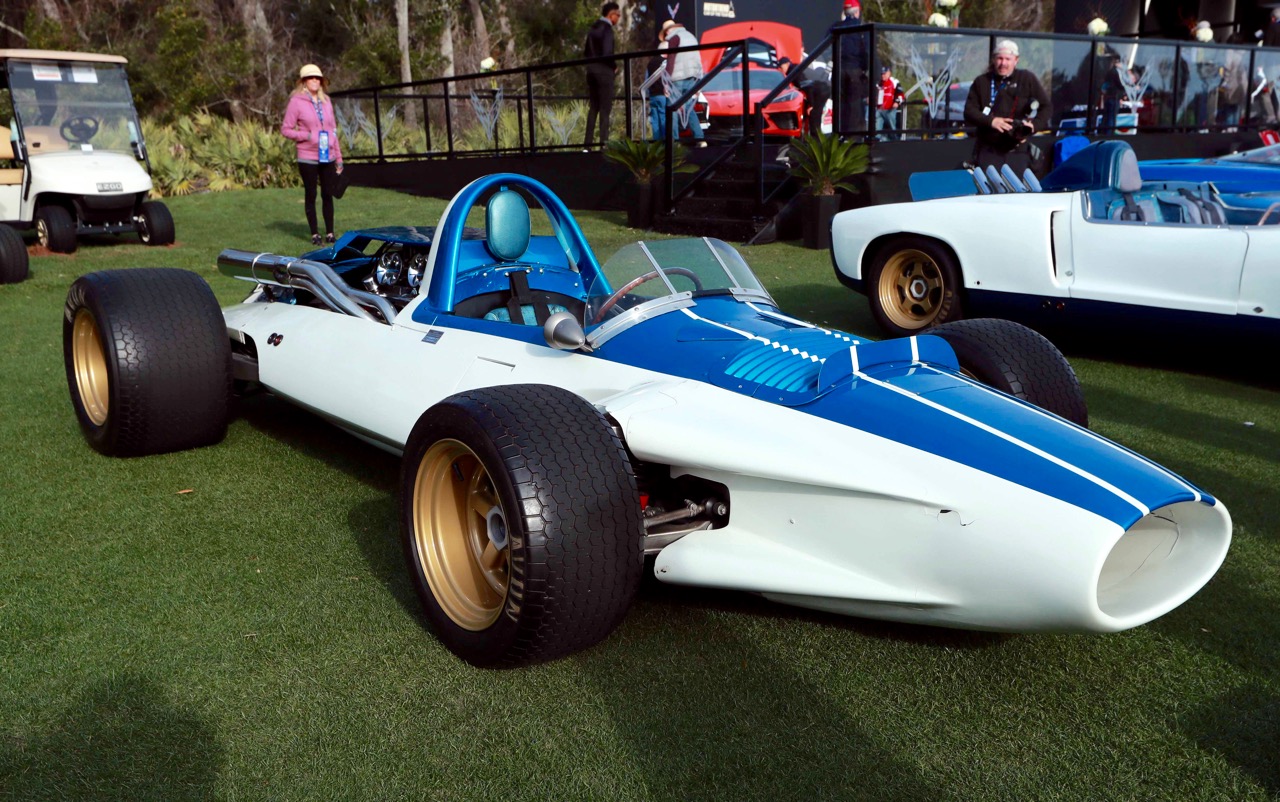
 Zora saw the future in the past. Recalling the pre-war Auto Union GP cars, he reflected on optimum weight distribution, coming to the conclusion that a mid-engine car was the answer. In 1960, GM revealed the CERV I at the United States Grand Prix in 1960 at Riverside. Lightweight with massive power from an aluminum and magnesium Chevy small-block and styling cues taken from aircraft, the CERV I, above, served as a test bed for advanced engineering at GM. Some 24 years after his passing, Zora Arkus-Duntov’s dream of a production mid-engine Corvette has come to fruition – ‘20 Corvette C8. Released to wide acclaim and perhaps more importantly, a full sales book, the C8 is a hot ticket today. The Amelia Island Concours d’Elegance took a moment to remember the long journey this concept has traveled by presenting ten examples of GM’s flirtation with the mid-engine concept: DUNTOV’S DREAM: MID-ENGINE CORVETTES.
Zora saw the future in the past. Recalling the pre-war Auto Union GP cars, he reflected on optimum weight distribution, coming to the conclusion that a mid-engine car was the answer. In 1960, GM revealed the CERV I at the United States Grand Prix in 1960 at Riverside. Lightweight with massive power from an aluminum and magnesium Chevy small-block and styling cues taken from aircraft, the CERV I, above, served as a test bed for advanced engineering at GM. Some 24 years after his passing, Zora Arkus-Duntov’s dream of a production mid-engine Corvette has come to fruition – ‘20 Corvette C8. Released to wide acclaim and perhaps more importantly, a full sales book, the C8 is a hot ticket today. The Amelia Island Concours d’Elegance took a moment to remember the long journey this concept has traveled by presenting ten examples of GM’s flirtation with the mid-engine concept: DUNTOV’S DREAM: MID-ENGINE CORVETTES.
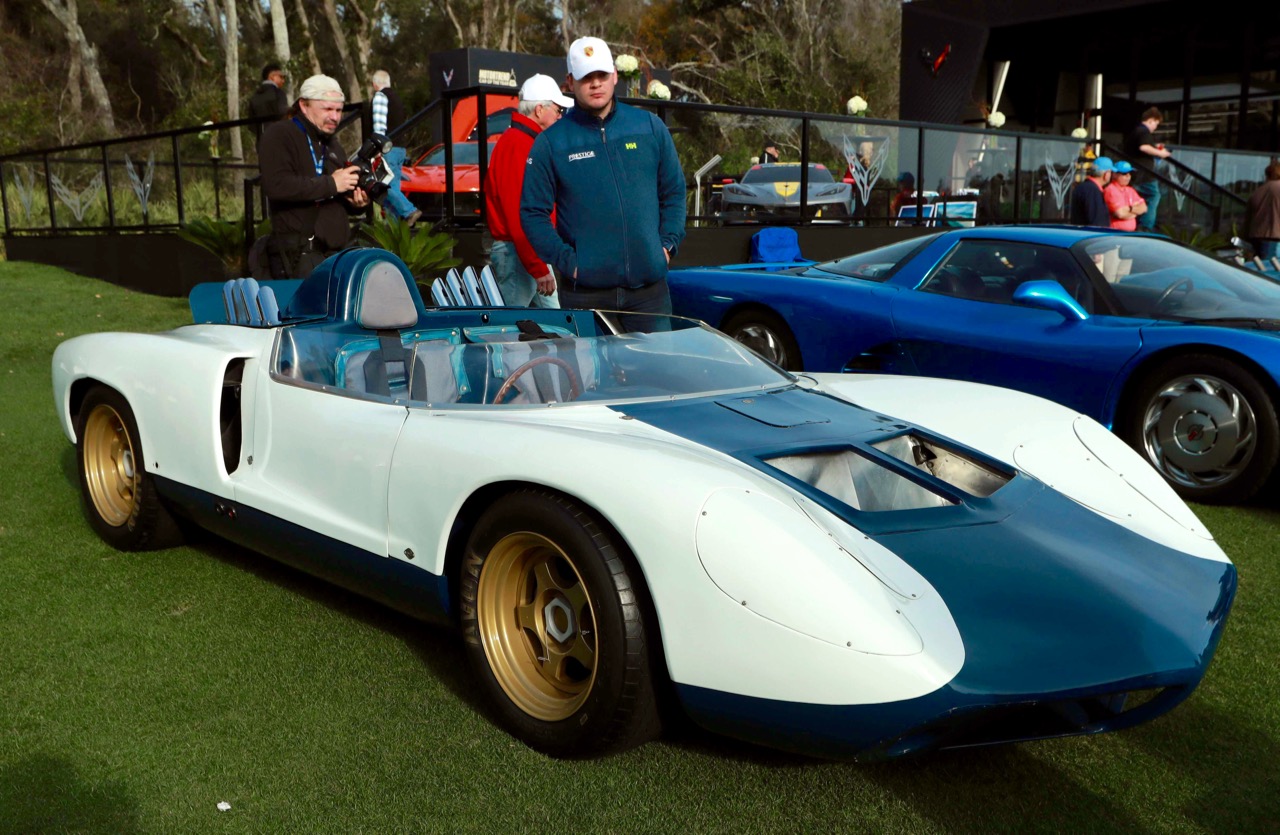 There is no question that Zora perceived racing as a way to improve the breed. Drawing on his experience at Le Mans with Porsche and Allard, he yearned to return with a GM built car. The CERV II was cutting edge, featuring a monocoque chassis and four-wheel drive utilizing twin torque converters and an experimental automatic transmission. Its overwhelming performance was sure to make an impact in France. As luck would have it, internal GM politics reared its ugly head and the project was scratched.
There is no question that Zora perceived racing as a way to improve the breed. Drawing on his experience at Le Mans with Porsche and Allard, he yearned to return with a GM built car. The CERV II was cutting edge, featuring a monocoque chassis and four-wheel drive utilizing twin torque converters and an experimental automatic transmission. Its overwhelming performance was sure to make an impact in France. As luck would have it, internal GM politics reared its ugly head and the project was scratched.
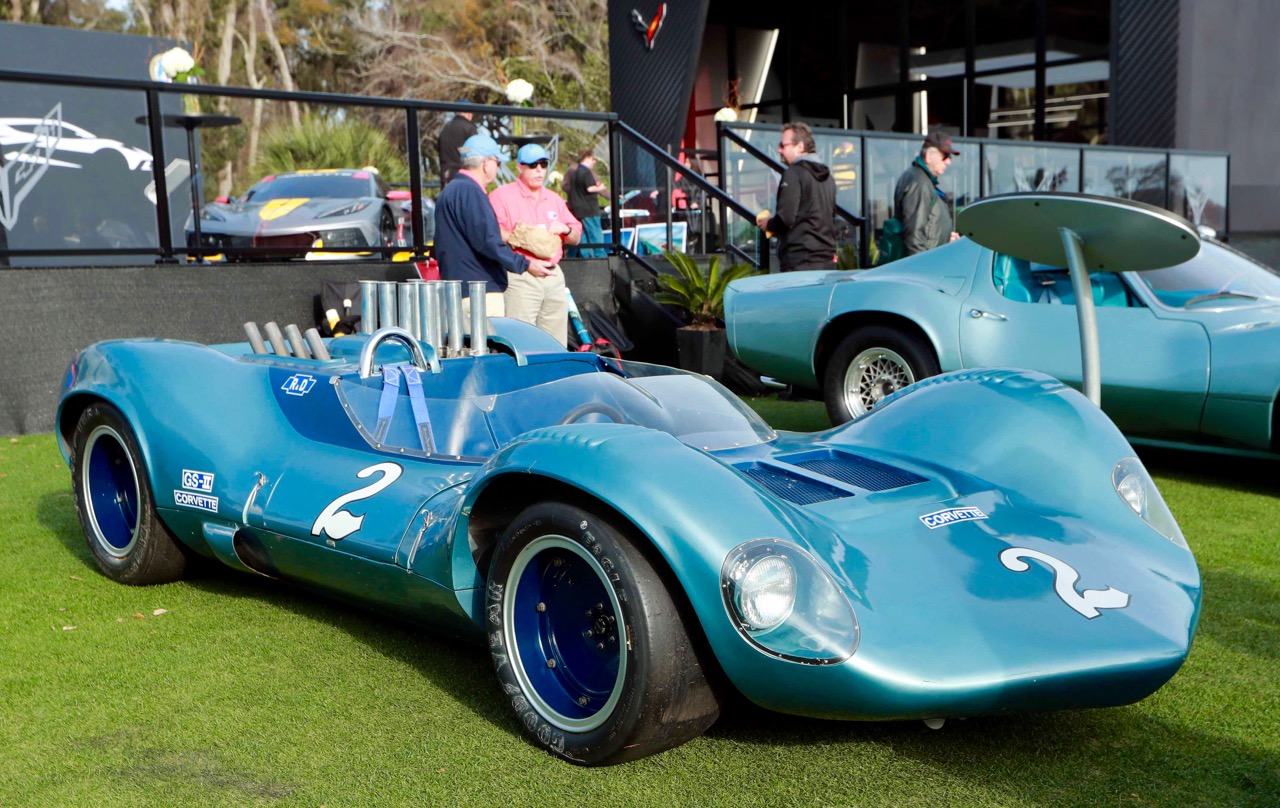 The ‘64 Corvette GS IIB is linked to the Chaparrals that Jim Hall raced extensively on the USRRC and Can-Am circuits. Built by GM, it would bounce back and forth between Detroit and Hall’s facility in Midland, TX for modifications and testing. Such Chaparral features as an aluminum Chevy small- block and an automatic transmission were developed with the GS IIB.
The ‘64 Corvette GS IIB is linked to the Chaparrals that Jim Hall raced extensively on the USRRC and Can-Am circuits. Built by GM, it would bounce back and forth between Detroit and Hall’s facility in Midland, TX for modifications and testing. Such Chaparral features as an aluminum Chevy small- block and an automatic transmission were developed with the GS IIB.
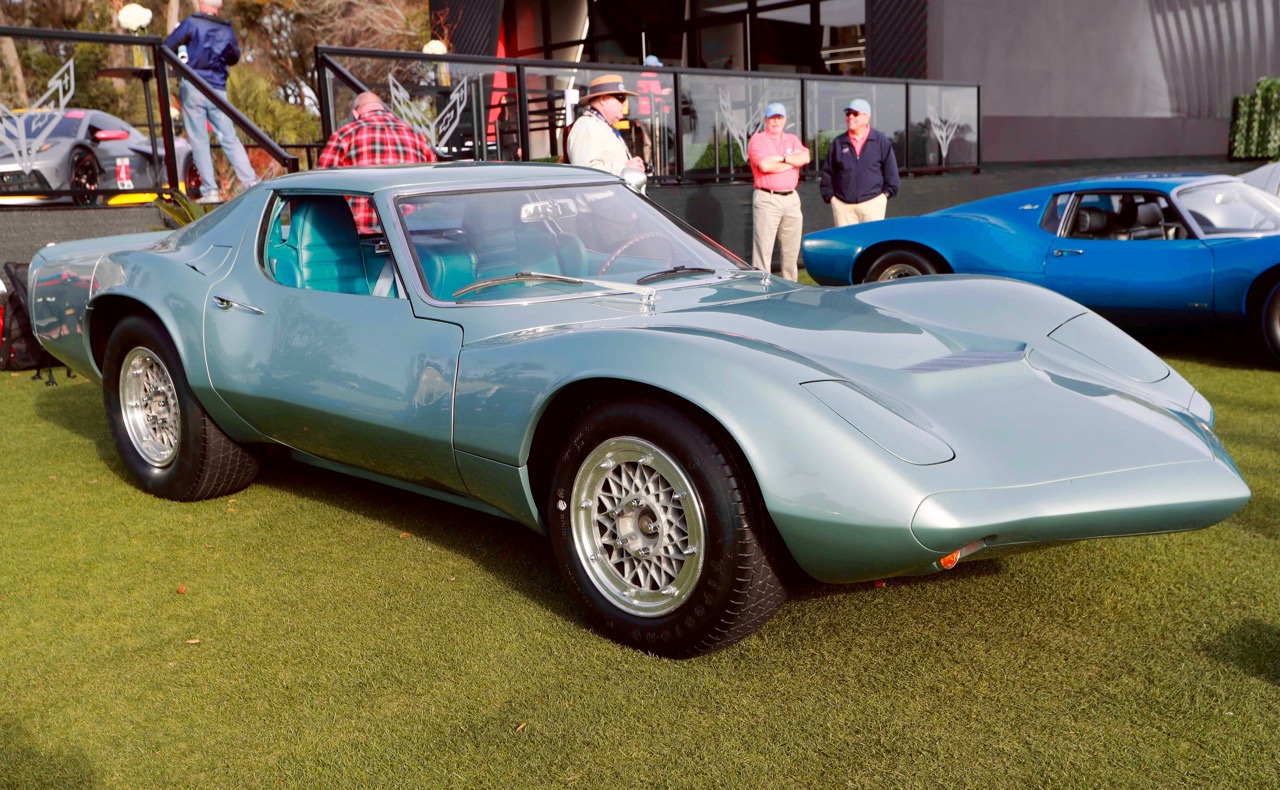 The concept for the ‘64 Corvette XP-819 was based on the Corvair. The theory was that a rear engine Corvette could be made to handle. The XP-819’s Larry Shinoda’s designed bodywork closely resembled a Sting Ray and served to help disguise its rear engine layout. Alas, it didn’t prove out as the car crashed during a lane change maneuver on a wet track. Like so many unsuccessful test cars, the XP-819 was disassembled and reconstructed from some remaining pieces.
The concept for the ‘64 Corvette XP-819 was based on the Corvair. The theory was that a rear engine Corvette could be made to handle. The XP-819’s Larry Shinoda’s designed bodywork closely resembled a Sting Ray and served to help disguise its rear engine layout. Alas, it didn’t prove out as the car crashed during a lane change maneuver on a wet track. Like so many unsuccessful test cars, the XP-819 was disassembled and reconstructed from some remaining pieces.
 The ‘68 Astro II was unveiled at the New York Auto Show and set off an avalanche of conjecture about a mid-engine Corvette. It certainly looked the part with big-block power and the radiator set in the rear to free up luggage space upfront. It was just a tease and never really progressed beyond the show car phase.
The ‘68 Astro II was unveiled at the New York Auto Show and set off an avalanche of conjecture about a mid-engine Corvette. It certainly looked the part with big-block power and the radiator set in the rear to free up luggage space upfront. It was just a tease and never really progressed beyond the show car phase.
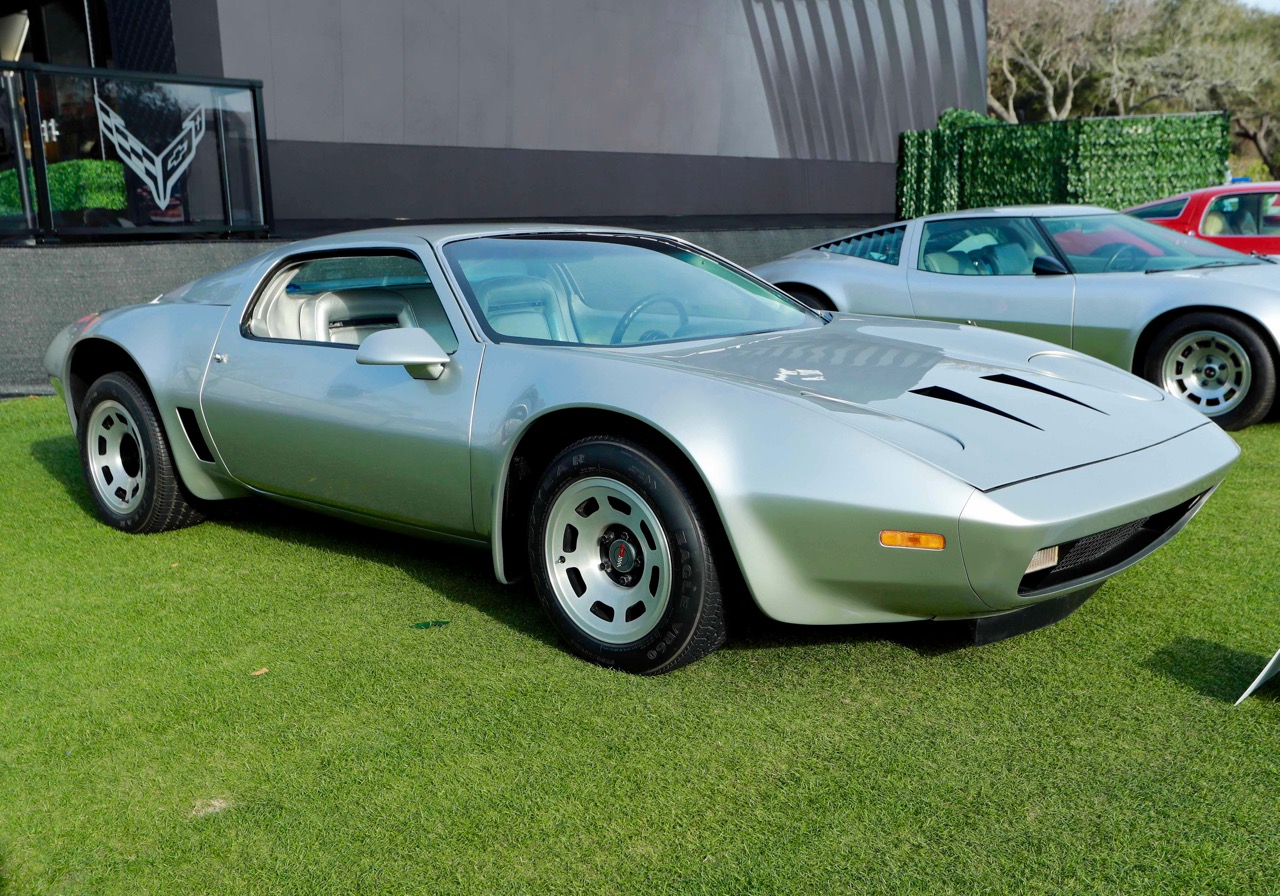 First known as the XP-895, this car seemed far along on its road to production with its fully fitted interior and high level of finish. It proved to be overweight based on its steel body. Enter Reynolds Aluminum and aluminum body panels were fitted, reducing weight by close to 40%. Again, never progressing to production, it did herald the arrival of aluminum as a body material.
First known as the XP-895, this car seemed far along on its road to production with its fully fitted interior and high level of finish. It proved to be overweight based on its steel body. Enter Reynolds Aluminum and aluminum body panels were fitted, reducing weight by close to 40%. Again, never progressing to production, it did herald the arrival of aluminum as a body material.
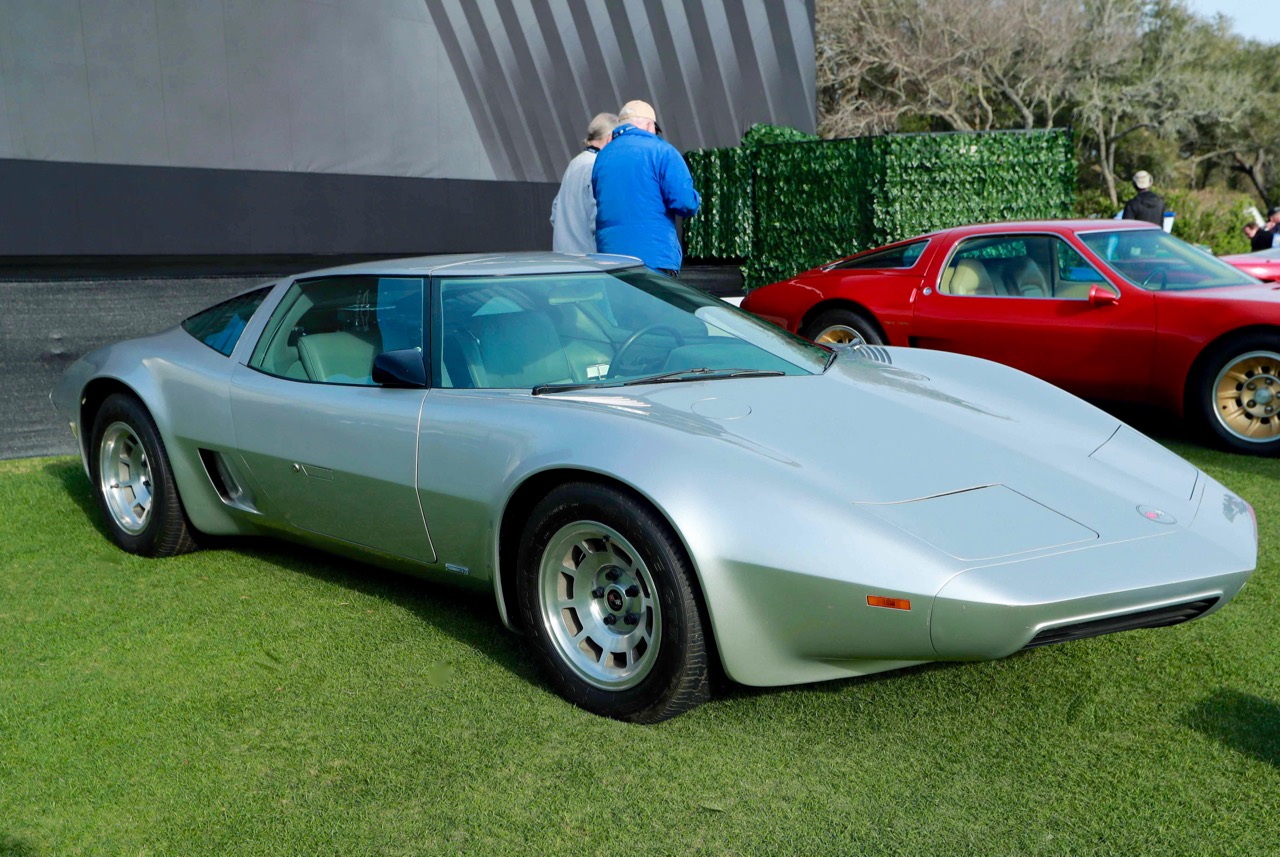 The ‘73 Aerovette traces its origin back to a time when GM was all in on the Wankel rotary engine. Originally launched in Paris as the Four Rotor, the car featured a 350 horsepower version of GM’s Wankel. Eventually GM’s Wankel phase passed, and the Four Rotor became the Aerovette when it was fitted with a more conventional Chevy small-block.
The ‘73 Aerovette traces its origin back to a time when GM was all in on the Wankel rotary engine. Originally launched in Paris as the Four Rotor, the car featured a 350 horsepower version of GM’s Wankel. Eventually GM’s Wankel phase passed, and the Four Rotor became the Aerovette when it was fitted with a more conventional Chevy small-block.
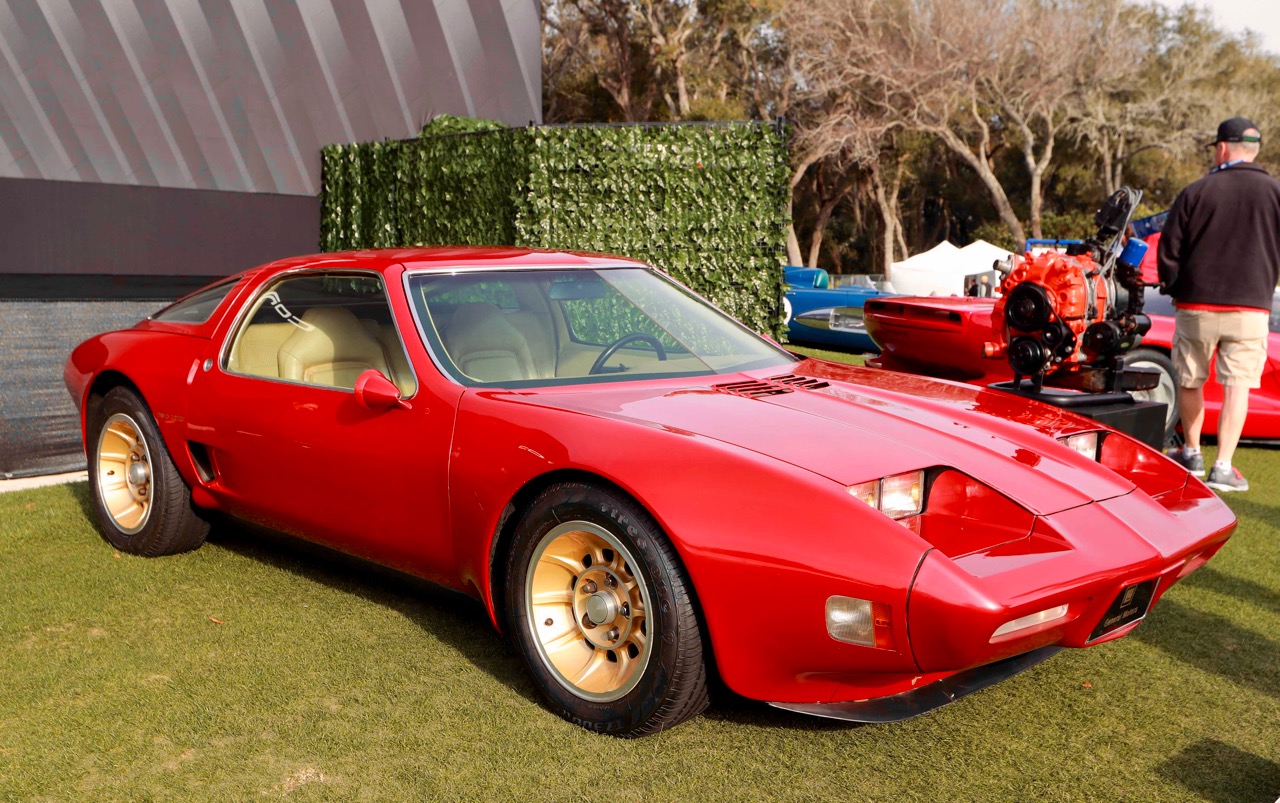 The other half of GM’s mid-engine Wankel powered prototype duo was the XP-987 GT using a two-rotor version. GM’s fascination with the rotary engine ended in the fuel crisis and in increased government emissions standards, both difficult to meet with a Wankel. After leaving the show circuit, the XP-987 found its way to Great Britain. Designated to be crushed, the car was rescued and lives today in the National Corvette Museum.
The other half of GM’s mid-engine Wankel powered prototype duo was the XP-987 GT using a two-rotor version. GM’s fascination with the rotary engine ended in the fuel crisis and in increased government emissions standards, both difficult to meet with a Wankel. After leaving the show circuit, the XP-987 found its way to Great Britain. Designated to be crushed, the car was rescued and lives today in the National Corvette Museum.
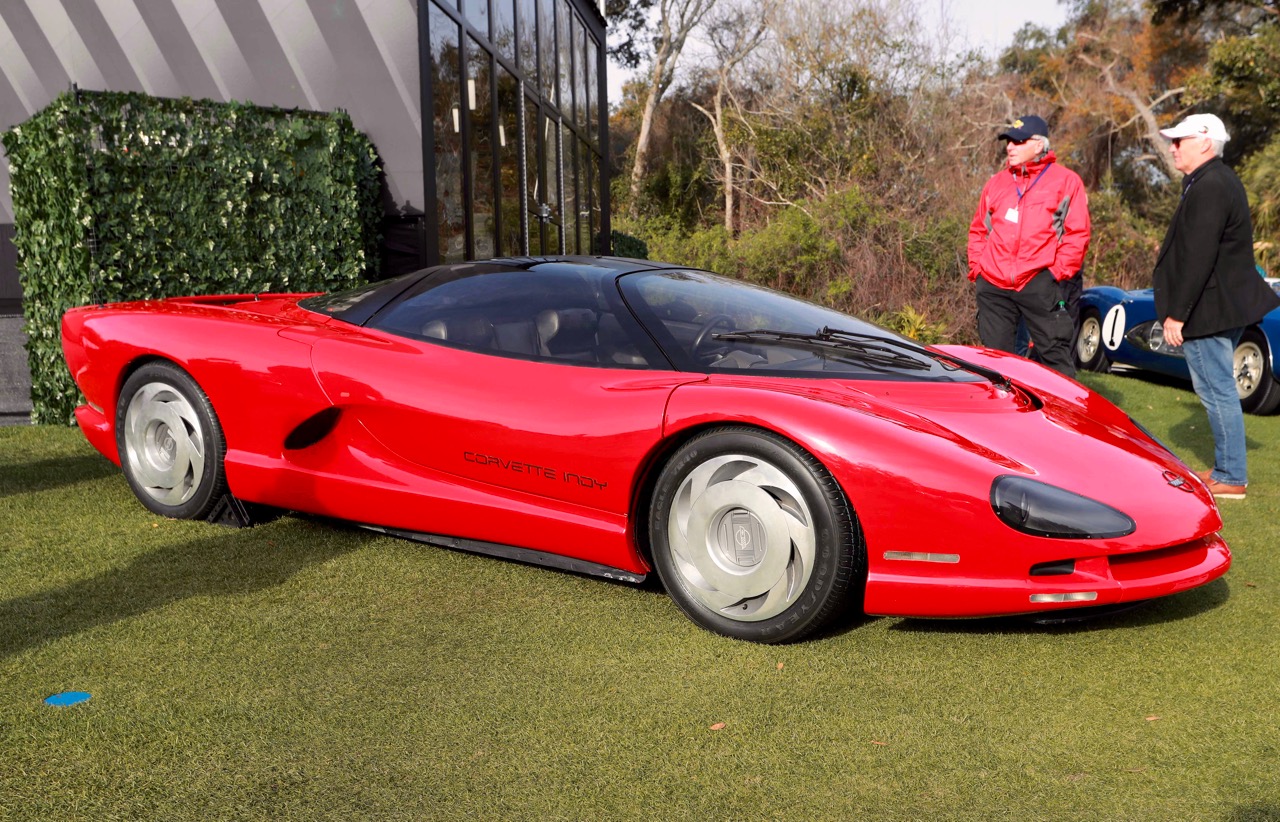 The Corvette Indy was likely never intended to get even close to production. It had a Chevrolet Indy racing V8 and a dizzying array of mechanical and electronic wizardry. A few years after its unveiling at the North American International Auto Show in Detroit, it was updated with a ZR-I powerplant.
The Corvette Indy was likely never intended to get even close to production. It had a Chevrolet Indy racing V8 and a dizzying array of mechanical and electronic wizardry. A few years after its unveiling at the North American International Auto Show in Detroit, it was updated with a ZR-I powerplant.
 Next in line for mid-engine Corvette prototypes was the ‘90 CERV III. Borrowing some of the lines used in the earlier Corvette Indy, the CERV II made steps towards practicality including a body made of carbon fiber, Kevlar and aluminum honeycomb. Power came from a turbocharged 650 horsepower 5.7 liter V8. All that power was put to the ground through a FWD system augmented by active suspension.
Next in line for mid-engine Corvette prototypes was the ‘90 CERV III. Borrowing some of the lines used in the earlier Corvette Indy, the CERV II made steps towards practicality including a body made of carbon fiber, Kevlar and aluminum honeycomb. Power came from a turbocharged 650 horsepower 5.7 liter V8. All that power was put to the ground through a FWD system augmented by active suspension.
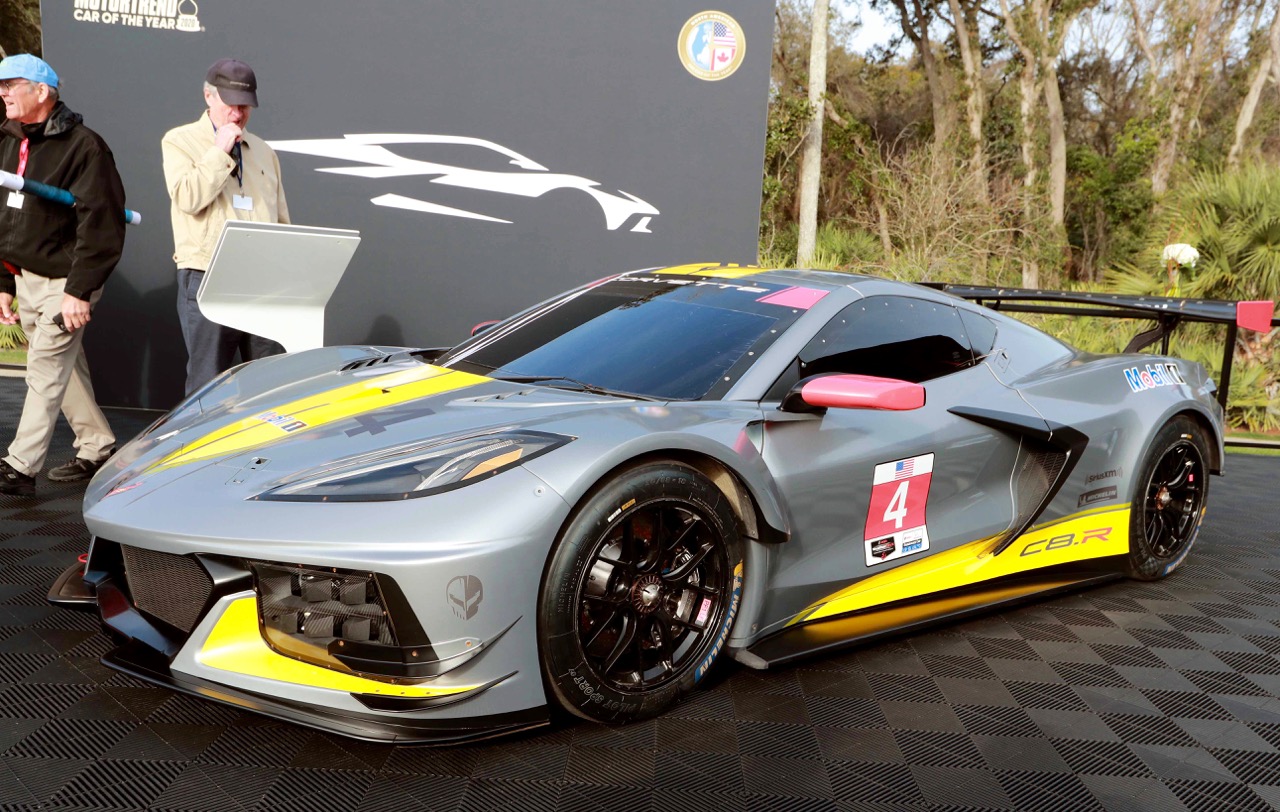 With perhaps one final nod to Zora, GM has taken the C8 racing. A pair of C8.Rs started their first race at Daytona earlier this year. Results were encouraging with the cars coming home fourth and seventh in class. They led briefly and were in contention for a good part of the race.
With perhaps one final nod to Zora, GM has taken the C8 racing. A pair of C8.Rs started their first race at Daytona earlier this year. Results were encouraging with the cars coming home fourth and seventh in class. They led briefly and were in contention for a good part of the race.
Special thanks to Jerry Burton for his excellent article “The Search for Middle Ground” in this year’s Amelia Island Concours d’Elegance program. Next year’s Concours is scheduled for March 4-7, 2021.
Words & Photos- Maureen & Mike Matune
For more information about DUNTOV’S DREAM: MID-ENGINE CORVETTES please visit: https://www.gmheritagecenter.com/index.html
https://www.corvettemuseum.org/
Details about the Amelia Island Concours:
